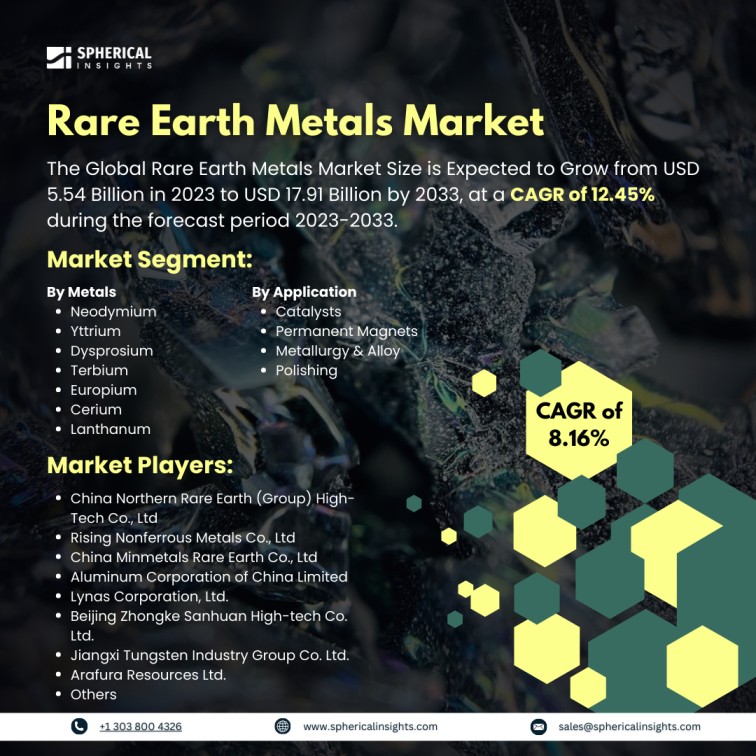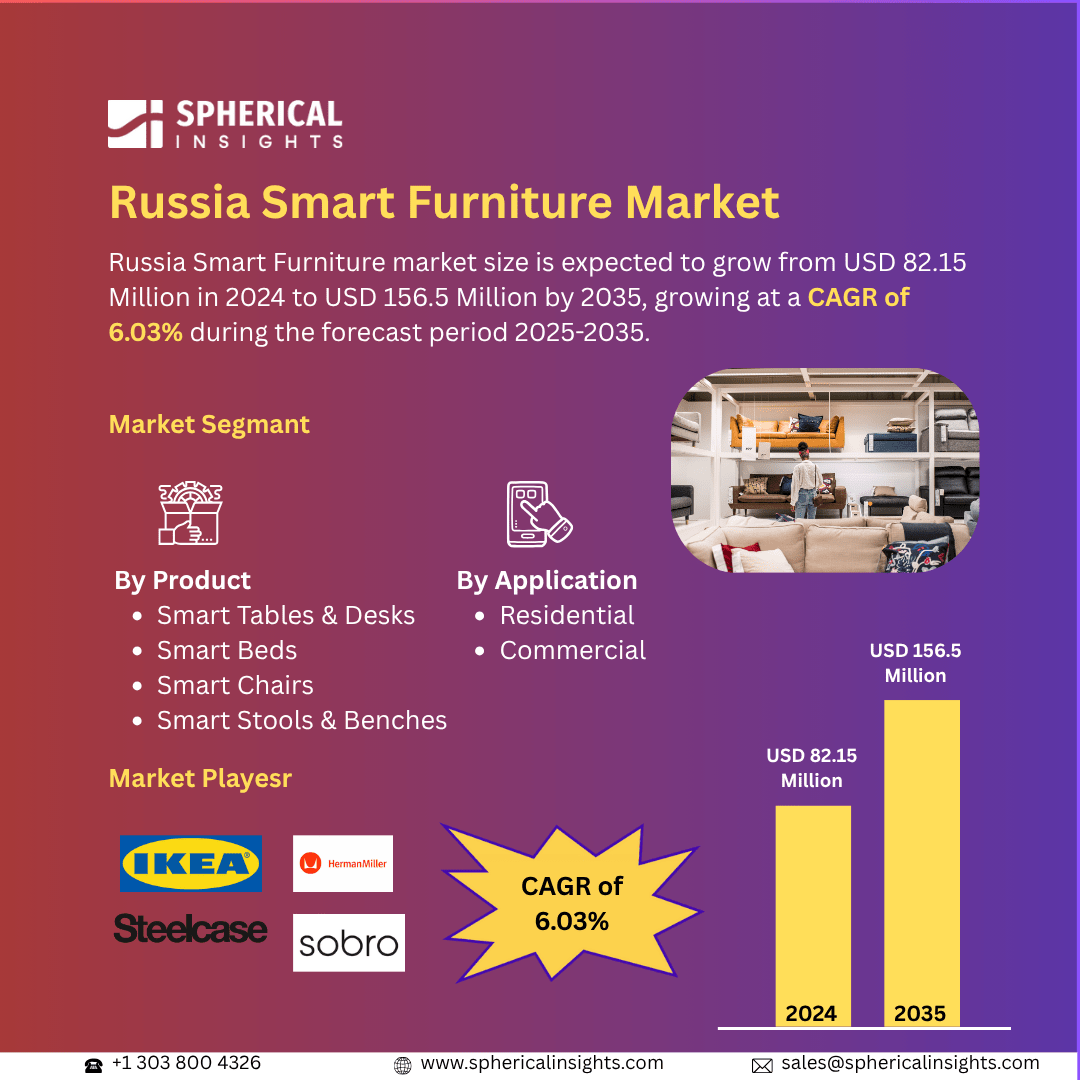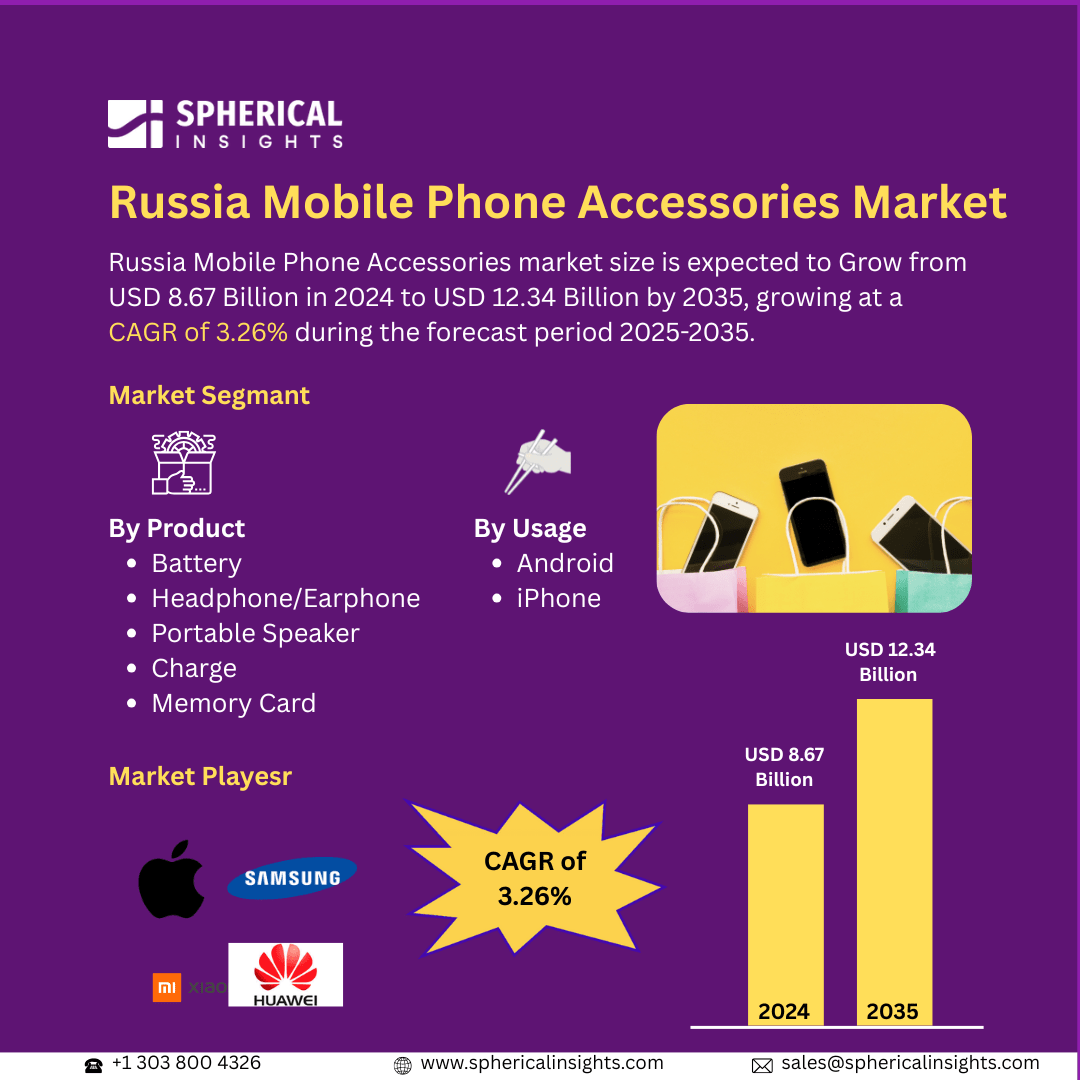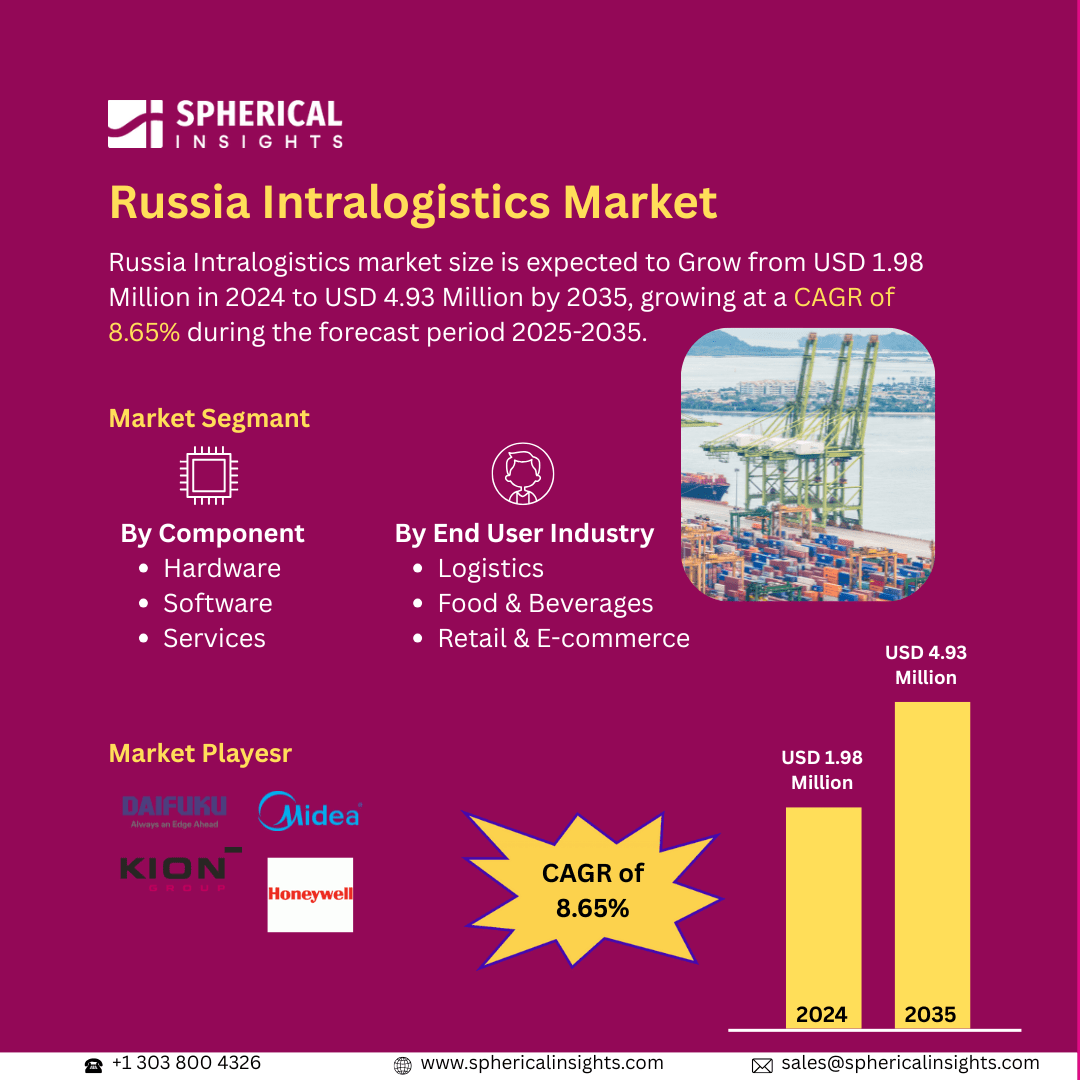Global Rare Earth Metals Market Size to worth USD 17.91 Billion by 2033
According to a research report published by Spherical Insights & Consulting, the Global Rare Earth Metals Market Size is Expected to Grow from USD 5.54 Billion in 2023 to USD 17.91 Billion by 2033, at a CAGR of 12.45% during the forecast period 2023-2033.
Browse key industry insights spread across 210 pages with 110 Market data tables and figures & charts from the report on the Global Rare Earth Metals Market Size, Share, and COVID-19 Impact Analysis, By Metals (Neodymium, Yttrium, Dysprosium, Terbium, Europium, Cerium, and Lanthanum), By Application (Catalysts, Permanent Magnets, Metallurgy & Alloy, and Polishing), and By Region (North America, Europe, Asia-Pacific, Latin America, Middle East, and Africa), Analysis and Forecast 2023 – 2033.
The manufacturing and distribution of 17 chemical elements necessary for several high-tech applications are part of the rare earth metals market. These elements which include lanthanum, neodymium, dysprosium, and cerium are highly prized due to their distinct magnetic, luminous, and electrochemical characteristics. They are essential to the production of electronics, catalysts, permanent magnets, glass polishing, and renewable energy technology. The global rare earth metals market is expected to grow significantly due to increasing demand for electronic products and electric vehicles. Key components like neodymium, praseodymium, and dysprosium are essential in manufacturing magnets and are widely used in consumer electronics like smartphones, laptops, and speakers. The demand for these metals is expected to accelerate with the rollout of next-generation technologies like 5G networks, artificial intelligence, and quantum computing. The growing dependence on rare earths in electronics, particularly in electric vehicles, is a key factor in the market's expansion. Various government initiatives drive the market of rare earth metals. For instance, the Indian government is actively promoting the mining and processing of rare earth elements through the Production Linked Incentive (PLI) Scheme, which aims to enhance recycling of critical minerals, including rare earth elements, to align with the Battery Waste Management Rules 2022. However, the global rare earth metals market faces environmental risks, price fluctuations, supply issues, geo-political challenges, and reliance on China, making alternative sources challenging.
The neodymium segment accounted for the largest share with 36.9% in 2023 and is expected to grow at a significant CAGR during the forecast period.
Based on the metals, the rare earth metals market is classified into neodymium, yttrium, dysprosium, terbium, europium, cerium, and lanthanum. Among these, the neodymium segment accounted for the largest share with 36.9% in 2023 and is expected to grow at a significant CAGR during the forecast period. Neodymium is crucial in producing permanent magnets of neodymium-iron-boron, which are used in various applications like home appliances and electric vehicles. These magnets maintain their magnetic properties without external power, making them essential for manufacturing. Demand is increasing due to high-energy use in consumer electronics, renewable energy technologies, and cost-effectiveness, leading to substituting conventional magnets with neodymium.
The permanent magnets segment accounted for the highest market share in 2023 and is expected to grow at a significant CAGR during the forecast period.
Based on the application, the rare earth metals market is divided into catalysts, permanent magnets, metallurgy & alloy, and polishing. Among these, the permanent magnets segment accounted for the highest share in 2023 and is expected to grow at a significant CAGR during the forecast period. Permanent magnets are increasingly used in various industries, including consumer electronics and renewable energy equipment. They are gaining popularity due to their compact and high-flux magnets, which are essential for miniaturization. Permanent magnet synchronous motors are also being adopted in HVAC, white goods, and automobiles. Renewable energy generation through wind turbines and electric vehicles also benefit from magnet usage.
Asia Pacific is estimated to hold the largest share of the rare earth metals market over the forecast period.
Asia Pacific is estimated to hold the largest share of the rare earth metals market over the forecast period. China dominates rare earth oxide production worldwide due to its rich reserves and control over supply. Southern China's mountains provide decades of rare earths, and its vertically integrated supply chain allows it to dictate global prices. Reducing dependence on China will require significant investment and time.
North America is predicted to have the fastest CAGR growth in the rare earth metals market over the forecast period. US and Canada are increasing exploration and processing of rare earth deposits, with government policies and funding supporting regional growth. North America's consumer electronics and electric vehicle industry is focusing on developing alternative regional sources and international collaborations to minimize Chinese imports.
Competitive Analysis
Major key players in the rare earth metals market include China Northern Rare Earth (Group) High-Tech Co., Ltd, Rising Nonferrous Metals Co., Ltd, China Minmetals Rare Earth Co., Ltd, Aluminum Corporation of China Limited, Lynas Corporation, Ltd., Beijing Zhongke Sanhuan High-tech Co. Ltd., Jiangxi Tungsten Industry Group Co. Ltd., Arafura Resources Ltd., and Others.
Recent Development
- In March 2024, Australian Strategic Materials (ASM) has signed a five-year contract with USA Rare Earth, LLC to supply neodymium iron boron (NdFeB) alloy, enhancing its position in the rare earth magnet market. The alloy will be supplied from ASM's Korean Metals Plant.
Key Target Audience
- Market Players
- Investors
- End-users
- Government Authorities
- Consulting And Research Firm
- Venture capitalists
- Value-Added Resellers (VARs)
Market Segment
This study forecasts revenue at global, regional, and country levels from 2023 to 2033. Spherical Insights has segmented the rare earth metals market based on the below-mentioned segments:
Global Rare Earth Metals Market, By Metals
- Neodymium
- Yttrium
- Dysprosium
- Terbium
- Europium
- Cerium
- Lanthanum
Global Rare Earth Metals Market, By Application
- Catalysts
- Permanent Magnets
- Metallurgy & Alloy
- Polishing
Global Rare Earth Metals Market, By Regional Analysis
- North America
- Europe
- Germany
- UK
- France
- Italy
- Spain
- Russia
- Rest of Europe
- Asia Pacific
- China
- Japan
- India
- South Korea
- Australia
- Rest of Asia Pacific
- South America
- Brazil
- Argentina
- Rest of South America
- Middle East & Africa
- UAE
- Saudi Arabia
- Qatar
- South Africa
- Rest of the Middle East & Africa



